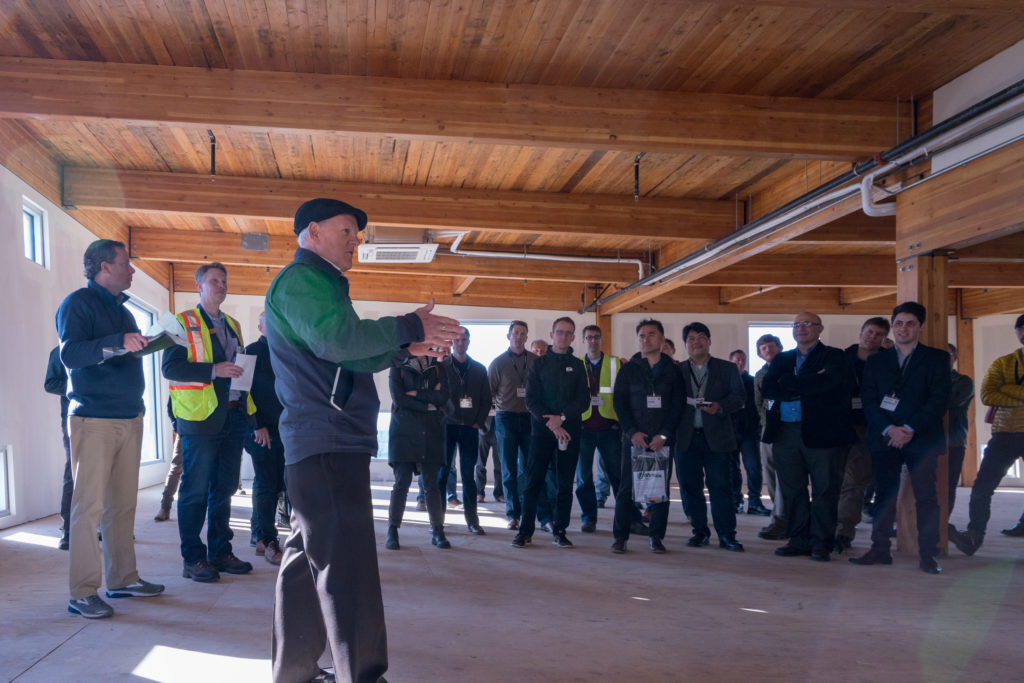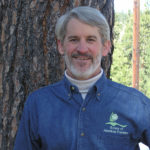
Forest management has been a hot-button topic for decades. Sadly, it continues today.
The divisiveness seems to come from the belief that there is a “right” way to manage forests, which of course leads to an us vs. them mentality. “If you’re not with me, you’re against me.”
Fortunately, more and more citizens seem to be re-examining this approach, recognizing that the sustainable growth of forests and the use of wood rather than fossil carbon-intensive materials is a better way to achieve a sustainable society.

I recently completed a chapter and a half for a report on the “State of the Industry North American Mass Timber” https://www.masstimberreport.com/ and I will be moderating a panel at the International Mass Timber Conference 2019 in Portland, Oregon, March 19-21 https://www.masstimberconference.com/.
The panel is focused on wood sources. Where can, or should, we get the wood needed to produce mass timber products? Panelists will discuss certification systems that address sustainably grown forests, including FSC, SFI, ATFS and PEFC, and how they fit into the picture. We will also discuss public land management, including national forests, state forests, national parks and wilderness areas, some of which allow timber harvests and some of which forbid it.
Jason Metnick from the Sustainable Forestry Initiative will discuss the chain of custody process is designed to ensure that the trees harvested are the lumber that goes into the products.
We will also have a panelist who will share a new financing model for accomplishing work on national forests to achieve more restoration work, using Forest Resilience Bonds. https://www.blueforestconservation.com/. The case study will show how downstream water users invest in forest treatments to help protect their watershed and use any wood products derived to reduce the cost of creating the more resilient forest.
Many of the trees are smaller and will go into pulp or wood energy, both relatively low value materials, a smaller percentage will be sawlog-sized trees with higher value.
The point is: Having a range of products that can use the whole array of tree sizes that need to be harvested helps the overall cost of the project.
The book and the conference are examining the entire supply chain, from the trees in the forest to the end user of the building. In my section of the book, I highlight the importance of forests, both those reserved from harvest to accomplish biodiversity conservation goals, and intensively managed lands focused on wood for the marketplace.
Sustainability is the tension point between meeting economic, environmental and social goals. Using mass timber to replace fossil energy-intensive construction materials helps reduce the carbon footprint of humans.
Researchers are helping to illustrate the tension between these essential elements of the sustainability triad.
A recent paper from The EcoTrust and University of Washington highlighted the ability to store more carbon in forests and wood products if West Coast Douglas fir forests are managed using alternative methods.
But the storage comes at a substantial cost.
So part of the analysis calculates the value of carbon storage needed for a forest landowner to justify a longer rotation and alternative management techniques. Interestingly, conventional forest management with a longer rotation provided a reasonable accommodation of both goals.
As with any research analysis, assumptions must be made and parameters placed on the scope of the analysis, influencing the outcome.
Carbon leakage and substitution benefits are significant factors when evaluating policy implications. Substitution benefits were considered outside the scope of the analysis, and they used California’s cap and trade rules for leakage (20 percent). But more recent analysis indicates the leakage can be up to 80 percent. A complete life cycle analysis (LCA) looking beyond the landowner would consider the substitution carbon benefits, which can be substantial and immediate. Therefore, no single study can look at all the trade-offs and benefits.
For me, there is great satisfaction in knowing the debate is about how to manage a forest and its values from wood products, carbon storage, water and habitat – not whether we should be managing forests for these combinations of values.
Many people seem to understand the truism that all forests will not provide all things to all people at all times. And that is what the State of the Mass Timber Industry report tries to help the public understand.

“For me, there is great satisfaction in knowing the debate is about how to manage a forest and its values from wood products, carbon storage, water and habitat – not whether we should be managing forests for these combinations of values.”
In Massachusetts there is a strong group of people who think “the highest and best use of forests is carbon sequestration” and that “forestry is not sustainable”. So, here, the debate is whether or not to manage forests at all! As for the right way to manage forests- I suggest there are many right ways and a number of wrong ways. Any way is right if the managers consider all variables and values then decide based on ownership goals.
Joe Zorzin
MA Forester Lic. #261
Adding a substitution effect at the building-level after market effects leakage has been accounted for at the forest-level wouldn’t change the comparison between different forest management approaches. That’s why our study (Ecotrust and UW), didn’t incorporate it. It’s not just because it was beyond the scope, but that it wouldn’t have changed the comparison between the forest management scenarios at all.
The point of accounting for market effects leakage at the forest-level is to recognize that demand for wood products will make up any supply shortfall introduced by new management approaches at the forest being evaluated through increased wood production at other forests. From the architect’s/engineer’s perspective, then, after market leakage has been accounted for, there is no difference in the availability of wood to use in their buildings and the specific impact of the subsitution effect is the same regardless of the wood they use. The amount of “upstream” carbon “embedded” in the wood they use, however, is not the same between wood sources, and is strongly related to how the forest the wood came from is managed and the volume of products it generates.
There’s obviously a balance to strike between how much (and what type) of forest products get generated and how much carbon is left in the woods. The important take-home message should be that whether you believe carbon is better stored in the forest or in wood products, both of these ideologies should still point you to encourage longer rotations than “business-as-usual”.
One other aspect that should not be overlooked is that wood products substitution has its own market leakage as well. The logic of substitution is that you reduce emissions (within the scope of your building project) from fossil energy that would’ve gone into the manufacture of other building materials (e.g., concrete or steel). This should sound eerily similar to the logic of storing more carbon (or preventing harvest-related emissions) at the forest property scale. Some of this additional carbon storage (or avoided emissions) is then “leaked” outside the forest property when others in the market make up for the wood you’re not producing by getting it from other suppliers. The same market behavior should be expected with avoided fossil fuel use from wood products substitution at the building level. The market will still demand the use of at least some of these fossil fuels the green builder avoided. So, the question is what do you think the appropriate leakage rate for product substitution would be? 20%? 80%? Most LCAs that include substitution ignore the leakage issue entirely (assuming 0% leakage).
I’ve been following the development of this new “mass timber” industry. I think it has great potential but it’s not going to solve the immense problem of too much “junk wood” in the forests. But I just saw a great use of it on a Netflix show. It’s Grand Designs season 15. The episode is in Ireland, in County Down- episode 3. A young architect and his wife build a beautiful home with mass timber.